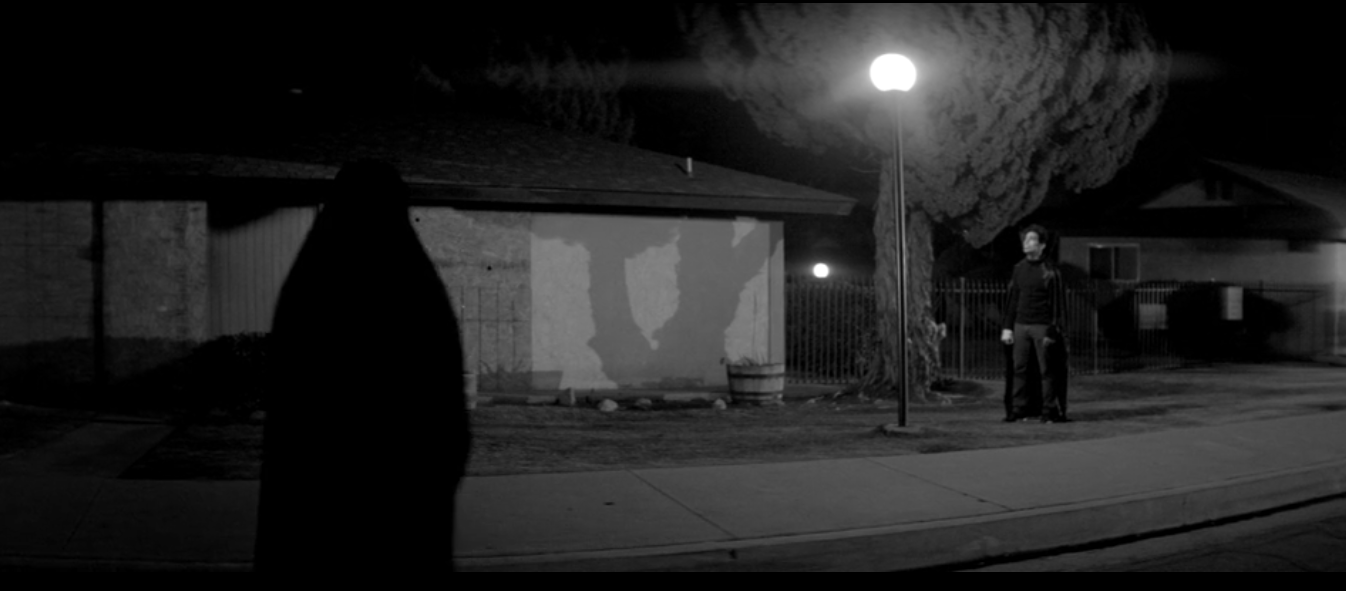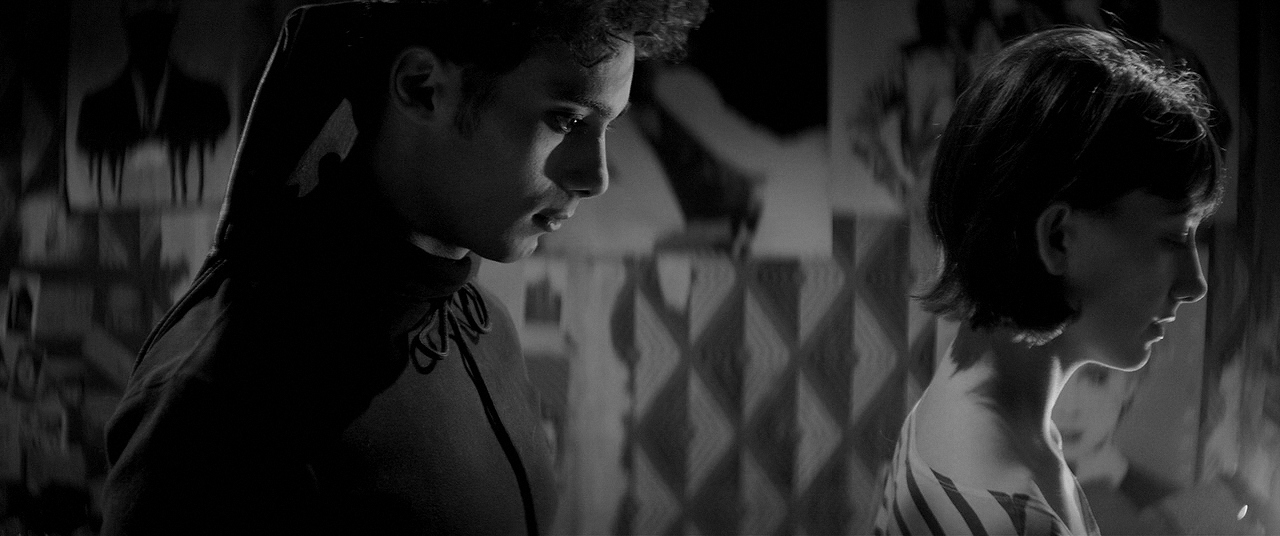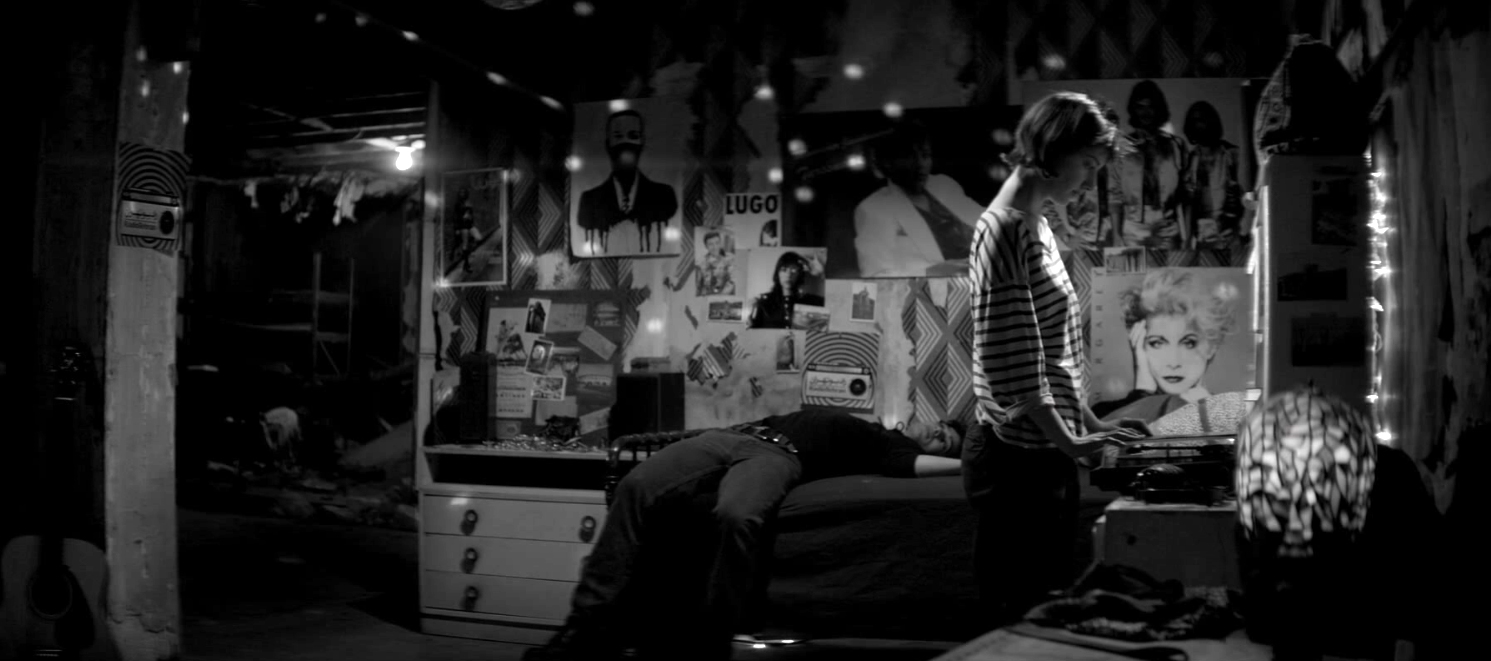Vampires: are they human or bat? When facing hybridities we tend to question which binary they fall into. This is because binaries bring order into society. When the binary is crossed either between female/male, good/evil, human/non-human this causes hybridity, so categorizing people becomes complex and disorientating. When someone or something doesn’t fall into one of the binaries, the question becomes: what are they? One of the reasons A Girl Walks Home Alone at Night is a queer feminist film is because Amirpour strategically uses the metaphor of the vampire as a shape-shifter, hybrid, and ultimately, trans. There are many folklores of vampires taking multiple forms, such as having a human body with bat-like attributes. Therefore, the line between human and non-human is crossed.

The trans allegory in the film isn’t solely dependent on The Girl, a.k.a. our caped vampire. While the vampire is a perfect trans allegory because vampires bend the binaries and The Girl dismantles patriarchal dominance in Bad City, she’s not the only hybrid in the film. The film itself is genre-hybridity—this means that different genres are being blended and shifted in the film—another trans allegory. A Girl Walks Home Alone at Night mixes horror, spaghetti western, neo-noir, and the superhero genre.

Many spectators identify The Girl to be a vampire vigilante, who stalks and feeds from the bad men in Bad City. The truth is we don’t know what her endgame is—that’s what makes her a mysterious and frightening character. She’s a literal femme fatale, but she’s not hyper-feminine in order to lure men to be her prey. She uses many methods. The Girl is depicted as a predator, for starters. She is known to walk the streets alone at night. She even stalks and mimics men’s movements to spook them off. We can argue that this is her way of letting people know that Bad City is hers, and anyone who thinks they can get away with dealing drugs or abusing women will be sorry. Then there’s the possibility of her just having fun. We get to know that The Girl isn’t always frightening as she looks. This is because we follow The Girl to her hideout where she dances to retro American music, and she begins to develop an intimate friendship with a guy who also has demons of his own.

In short, there are moments where The Girl is like Batman, wearing a black cape-like chador and taking out the bad guys, with her fangs, of course. But she’s a liminal entity, meaning we can’t really place her in a category because she’s a complex and trans character. Do we really know if she’s good or bad, and how she determines who lives and who dies? One thing is for sure: someone who breaks boundaries and doesn’t wear a chador for religious reasons is fluid in every way.

Comments